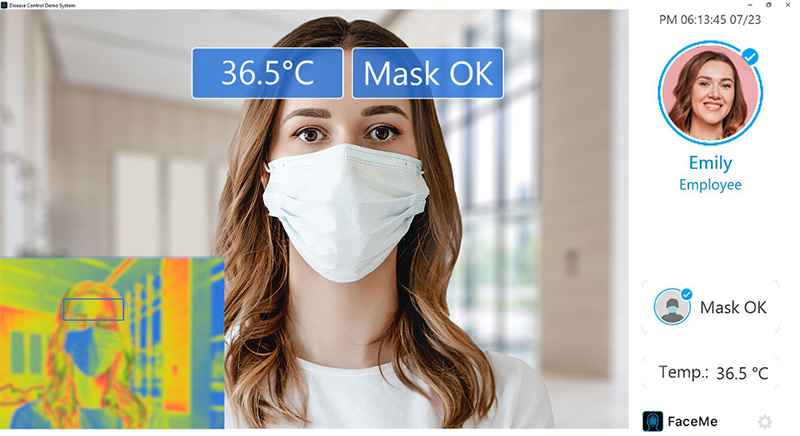Manufacturers like Toyota deploy FRT to streamline operations, protect connected assets and ensure worker safety amid ongoing challenges.
Smart factories are quickly becoming the norm across industries. Manufacturers have accelerated investments in connected machines, machine learning inspection processes and IoT everything since the start of the pandemic. In fact, 76% of manufacturing executives say they’ve increased their adoption of disruptive technologies in the past few years, yet many factories are using the same form of security today as they did a decade ago. The next generation of the smart factory will see an increased use of facial recognition technology (FRT) for security purposes, especially as ongoing supply chain disruptions and inflation cut into profit margins.
Hiring and retaining good security staff is becoming more time consuming and expensive, especially amid a labor shortage in which 2.1 million manufacturing jobs will go unfilled by 2030. And while cyberattacks may get the lion’s share of media attention, physically protecting factories is just as important to safeguarding private information, protecting personnel and ultimately delivering product. Industrial leaders can turn to biometrics to help existing staff maintain tight access control while protecting workers.
With economic uncertainty likely to persist through the end of the year, manufacturers must find new ways to ensure fast delivery of quality goods. In the automotive sector, Toyota deploys facial recognition to guarantee quality control as machines become more complicated than ever and individualized experts are needed for each part of the car. Toyota uses the AI-engine throughout its inspection information system to confirm with high-speed and accuracy that the person working on and inspecting different parts of the car manufacturing process are the right ones, i.e. the wheel technician is on the wheel assembly while the engine technician is on the engine line. Toyota is using the technology to ensure only trained and qualified individuals are handling this aspect of quality control. The quick, contactless authentication at each station also saves time and improves productivity on the factory floor. While this case is the pinnacle of FRT usage in manufacturing right now, there are many other opportunities to deploy biometrics.
In factories across industries, facial recognition helps monitor operations and the execution of complex workflows for access control and worker safety. In one Taiwaneese factory, using FRT allowed the company to automate employee processes for 20,000 employees, not only allowing them to clock in and out automatically, but it ensured all workers are where they’re supposed to be and that they don’t accidentally wander into a dangerous area.
Safety equipment will always be necessary on the factory floor. Factories choose to deploy FRT that can authenticate users without requiring the removal of hard hats, goggles, gloves or masks. The technology can also decipher if safety equipment is worn properly, making it an effective way for managers to prevent the spread of infectious disease and keep workers safe. Furthermore, because of its access control capabilities, FRT can monitor the employee entry and exit and send an alert if someone spends excessive time exposed to dangerous substances or temperatures.

Security is another key use for FRT. In the past, security for smart factories relied on complex legacy systems which often lacked integration capabilities and required work-intensive, complex processes to set up and maintain. Facial recognition is critical for security and surveillance at factories. Not only does it perform real-time identity verification when a person enters a facility, but it integrates with time and attendance systems to automatically determine when and where an employee worked. It’s able to monitor and log who accesses restricted areas and send alerts if an unauthorized person tries to gain access. It also eliminates the potential for human error and can quickly locate people of interest in the event of a breech.

Accuracy is crucial in any FRT use case but especially when it comes to security. It’s important any FRT integration performs well in anti-spoofing tests and addresses all the common problems of earlier facial recognition solutions such as lack of accuracy, poor performance, and gender or racial bias.
Facial recognition is used ethically every day, in our phones, cars, homes and more. Toyota’s FRT doesn’t require the storage of facial features. To perform facial recognition, another template is generated from the live view of an individual’s face and is matched to the template on file. FaceMe’s encrypted strings of data are less than 5 Kbytes in size and can be analyzed at the edge or processed on the cloud all within a few milliseconds, and it is impossible to recreate a face from a template. By adhering to guidelines set by The National Institute of Standards and Technology, it can safely be deployed in a factory setting to improve the worker experience.
For more information visit https://www.cyberlink.com/faceme.

About the Author:
Richard Carriere is the Senior Vice-President of Global Marketing & General Manager of CyberLink, a world leader in facial recognition technology. He leads worldwide marketing, overseeing branding, strategy, communications, and web commerce. He also manages the Company’s US operations. Richard holds a master’s degree of Business Administration from the Amos Tuck School at Dartmouth College. He also graduated from the London Business School and the Université de Montréal.
Scott Ellyson, CEO of East West Manufacturing, brings decades of global manufacturing and supply chain leadership to the conversation. In this episode, he shares practical insights on scaling operations, navigating complexity, and building resilient manufacturing networks in an increasingly connected world.